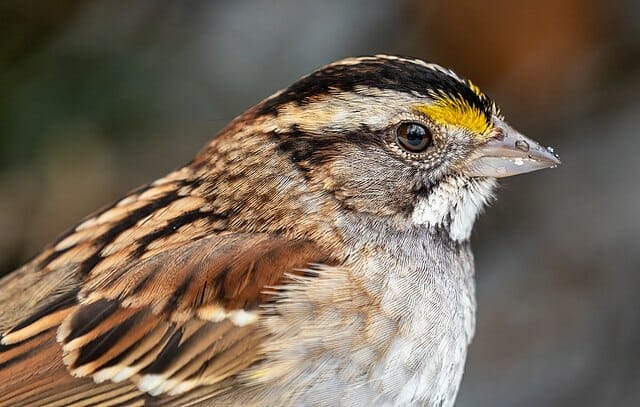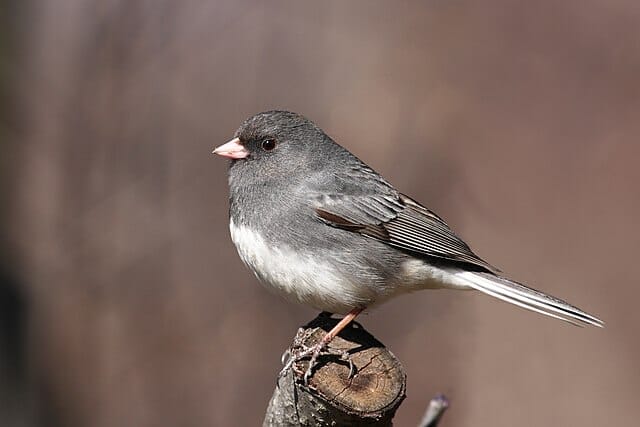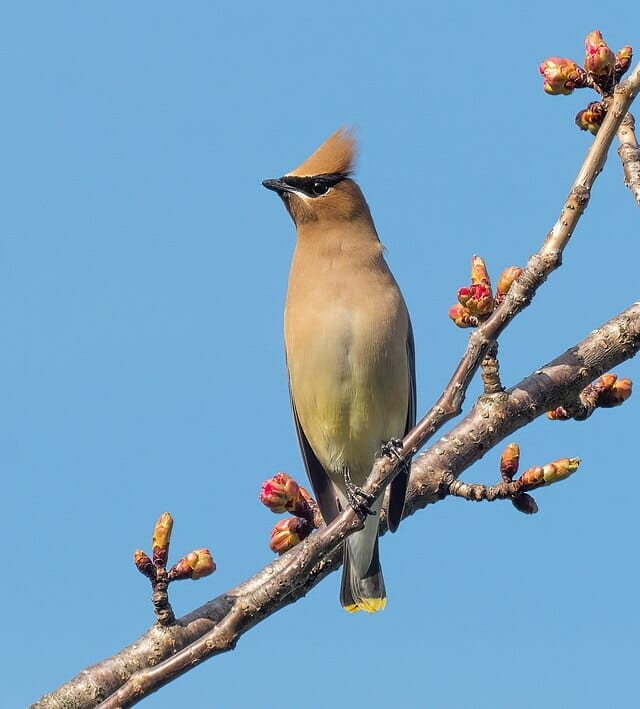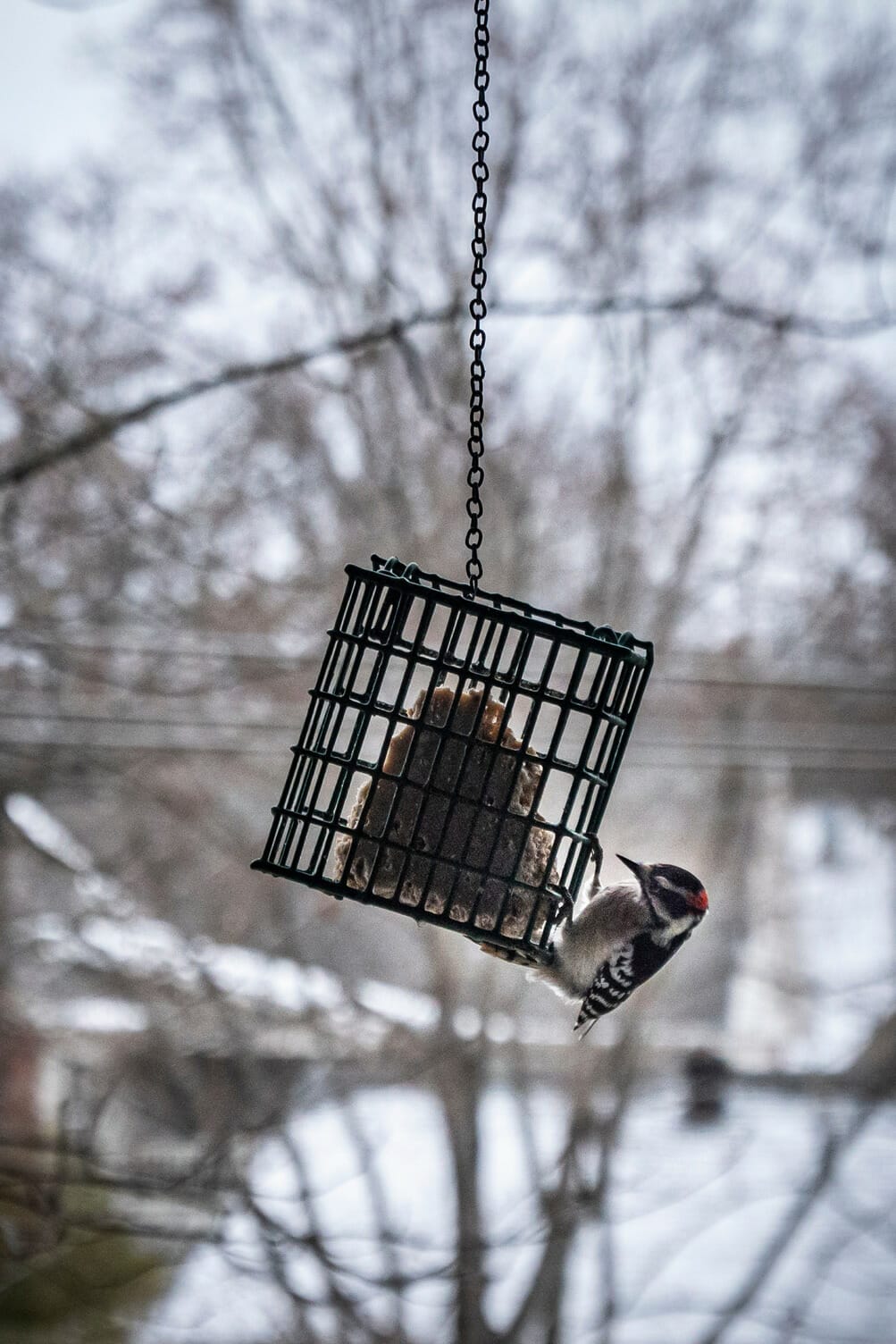

Uh oh...
It appears that you're using a severely outdated version of Safari on Windows. Many features won't work correctly, and functionality can't be guaranteed. Please try viewing this website in Edge, Mozilla, Chrome, or another modern browser. Sorry for any inconvenience this may have caused!
Read More about this safari issue.

With the winter season nearing, here is a guide to the Backyard Birds of Arkansas winter edition! These birds are active in the winter and are likely to be seen flying around during colder months. While our summer residents migrate to warmer climates, these birds stay around in our backyards during the cold season. They fluff up their feathers to keep warm, creating air pockets. They also eat plenty of fat-rich food to generate more heat. What birds do you see in your backyard?
VJAnderson, CC BY-SA 4.0, via Wikimedia Commons
Brown Creeper
They definitely get their name from their color. A brown creeper is a brown bird with a white breast and throat, and a long rusty-brown tail. They use their coloration to avoid predators and not stand out, usually remaining motionless.
Food: Mostly insects, but will also indulge in suet, sunflower seeds, pine seeds, grass seeds and corn.
Song: High, thin whistles, “see wee see tu wee.” Their call is a high-pitched “tsee.”
Rhododendrites, CC BY-SA 4.0, via Wikimedia Commons
Yellow-rumped Warbler
Although their colors are duller in winter, you can’t miss the noticeable yellow rump patch on the yellow-rumped Warbler. They are brownish-gray above with streaks on their breast and even have some yellow patches on their wings.
Food: Insects and berries
Song: A loose trill with a lower or higher pitch at the end of the song. Their call is a low “cheep.”
Rhododendrites, CC BY-SA 4.0, via Wikimedia Commons
Ruby-crowned Kinglet
This is one of the smallest songbirds in North America. The Ruby-crowned Kinglet is a greenish-gray bird with dark wings and white eye rings. Males have a red chest, but it is difficult to see if they are not raised or in flight.
Food: Small insects like beetles, flies, leafhoppers and caterpillars.
Song: Begins with high, clear whistles and picks up speed.
Rhododendrites, CC BY-SA 4.0, via Wikimedia Commons
White-throated Sparrow
These birds can be found with two different colorings, “white-striped” and “tan-striped.” White-striped adults have white eyebrows that turn yellow near their bills, with white throats and gray bellies. A tan-striped form has tan eyebrows and a dull breast.
Food: Seeds and insects
Song: Two whistled notes followed by three to four quivering, high-pitched notes in the rhythm of “Oh sweet Canada Canada Canada.”
Krunal Desai – Bird & Wildlife Photographer, CC BY-SA 4.0, via Wikimedia Commons
White-crowned Sparrow
Young white-crowned sparrows have tan and gray stripes on their head. Adult white-crowned sparrows have black and white stripes on their head, a gray belly and face, a tan back with streaks and white wing bars.
Food: Seeds of weeds and grasses. Along with wasps, beetles and caterpillars.
Song: Clear whistles, then buzzes and trills on different pitches.
Cephas, CC BY-SA 3.0, via Wikimedia Commons
Dark-eyed Junco
The Dark-eyed Junco can be seen from brown to dark gray, while the underside of the tail is white and has a pink bill.
Food: Seeds and insects like spiders, grasshoppers, caterpillars and beetles.
Song: A short trill, with call notes that sound like “zeet” or “zip.”
Rhododendrites, CC BY-SA 4.0, via Wikimedia Commons
Cedar Waxwing
This black-masked bird is yellowish-brown, with grey tails and red-tipped wings.
Food: Berries of red cedar and honeysuckle, along with fruit
Song: Very high-pitched and slurred whistles
Photo courtesy of Arkansas Parks & Tourism
Yellow-bellied Sapsucker
You can catch a yellow-bellied sapsucker in your backyard because of their distinct black-and-white striped faces, red cap on the top of their head and a yellowish wash on the belly. Males will have a red throat patch, while females are white.
Food: Insects, sugary tree sap and fruit
Song: calls are a nasal or whiny mewing sound.
Cover image by Chris Light, CC BY-SA 4.0, via Wikimedia Commons
We do the work.
You check your email.
Sign up for our weekly e-news.
Get stories sent straight to your inbox!
















Like this story? Read more from Kayleigh Tritschler
You're gonna need a bigger belt for this fun event! Presented by...
Mocktails and infused waters are a great way to ring in the new year...
In honor of Veteran's Day, First Security Bank is spotlighting some of...
Join the Conversation
Leave a Comment